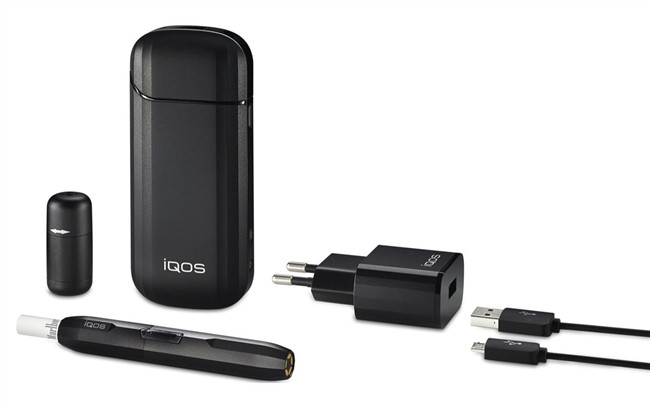RICHMOND, Va. – Philip Morris International Inc. is hoping to capitalize on the growing appetite for alternatives to traditional smokes like e-cigarettes with a new Marlboro-branded product that heats tobacco rather than burning it.

The world’s second-biggest tobacco company on Thursday detailed its plans to release the Marlboro HeatSticks in cities in Japan and Italy later this year, with further expansion plans in 2015.
The products represent another run at improving heating technologies that failed when originally introduced in the 1990s.
The short, cigarette-like sticks are heated to maximum of 660 degrees Fahrenheit (350 degrees Celsius) in a hollow pen-like device called iQOS (pronounced EYE-cohs) to create a tobacco-flavoured nicotine vapour. Unlike popular e-cigarettes that use liquid nicotine, HeatSticks contain real tobacco, a point the company believes will make them more attractive to cigarette smokers.
READ MORE: Should officials ban cigarette sales to new smokers? Take our poll
It’s one of several so-called “reduced-risk” products Philip Morris International plans to test as the industry diversifies beyond traditional cigarettes amid declining demand.
Products like the HeatSticks “represent a potential paradigm shift for the industry, public health and adult smokers,” CEO Andre Calantzopoulos said during an investor day presentation Thursday.
The company, based in New York and Switzerland, has spent about $2 billion over more than a decade on development of the products and expects that iQOS would boost its profit by $700 million when sales reach 30 billion units.
The overseas Marlboro maker announced plans in January to invest up to 500 million euros (about $680 million) for two plants in Italy to make the products.
On Tuesday, the company said in addition to its own cigarette alternatives, it purchased U.K.-based e-cigarette maker Nicocigs Ltd. Financial terms were not disclosed.
READ MORE: Are e-cigarette poisonings on the rise in Canada?
In the 1990s, the contraptions that heat tobacco rather than burning it didn’t pass muster with smokers. Even though the products left no lingering odour and didn’t produce ashes, they tasted different than cigarettes and were more difficult to use.
Now, a surging e-cigarette industry has tobacco companies hoping for a resurgence of the technologies that some argue are less harmful than lighting up.
With the health risks associated with traditional cigarettes and changes in societal expectations, it’s no wonder many of the world’s 1 billion smokers want to quit or try other tobacco alternatives. In the U.S., nearly half of the nation’s 42 million adult smokers try to quit each year, according to the Centers for Disease Control and Prevention.
In more recent years, much of the attention to quitting has steered away from nicotine gum and patches to electronic cigarettes, which many smokers credit with helping them kick the habit.
HeatSticks build on Accord – a product with a clunky pager-like heater in which smaller cigarettes were inserted – that was test-marketed in the late 1990s by Philip Morris USA, which spun off its international business in 2008 and is owned by Richmond, Virginia-based Altria Group Inc.
READ MORE: U.S. officials want to regulate e-cigarettes – is Canada following?
One of its other products in development resembles Eclipse, a cigarette introduced by competitor R.J. Reynolds Tobacco Co. in the mid-1990s that used a carbon tip that heated tobacco after being lit by a lighter.
“Smokers then considered Eclipse to be a very foreign, very different, very novel concept in smoking, where today, compared to electronic cigarettes, tobacco heating cigarettes are much more familiar,” said J. Brice O’Brien, head of consumer marketing for Reynolds.
Reynolds hasn’t announced plans to reinvigorate Eclipse, but it is still in limited distribution and one of the top-selling brands in the cafeteria at the company’s Winston-Salem, North Carolina, headquarters.
Philip Morris International and former parent company Altria have agreed to share their technology for electronic cigarettes and other new alternatives to traditional cigarettes, so HeatSticks could potentially be marketed in the U.S. eventually.
Both companies have noted the potential for the products to be less risky than traditional cigarettes and could apply to the Food and Drug Administration in the U.S. to market them as such.
—
Michael Felberbaum can be reached at http://www.twitter.com/MLFelberbaum.



Comments